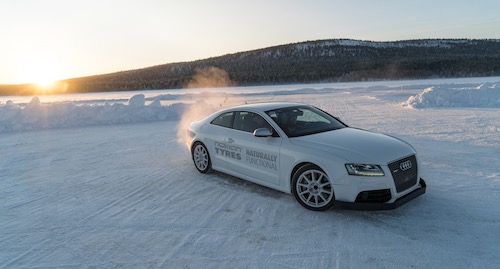When you have winter conditions, all-weather tires will outperform all-season tires, when it comes to safety and performance. The main reason for this is the fact that all-weather tires are approved for winter use. They actually hold the severe service emblem indicating that they meet the performance criteria in snow testing to be considered severe snow service rated. This is the same emblem used on winter tires. The main reason why all-weather tires outperform all-season tires in winter conditions is that they are designed for cold temperatures and winter weather, while the all-season tires are not. All-season tires are only designed for warm seasons, i.e. spring, summer and fall. The all-weather tires can be used both in cold and warm seasons and are really tires for all the seasons and all the weathers.
This means that you should use all-season tires during those seasons and then combine them with winter tires for the winter season, if you have real winter conditions, that include snow, ice, slush and other slippery conditions. The other option is to use all-weather tires the year round.
The choice for all-weather tires a good one when living in an area that will see some winter weather during the year, but it doesn’t warrant the change to winter tires for the whole winter season. Keeping in mind that nothing outperforms dedicated winter tires, studded or non-studded alike. Dedicated winter tires, especially studded-winter tires have the ultimate grip and traction, especially lateral traction. The main drawback with dedicated winter tires is of course the need to change tires in the winter as soon as the snow melts. The winter tires have a superior tread pattern as well as a softer rubber compound, making them much better in handling both freezing temperatures and allowing superior handling on ice and snow.
For more information regarding all-weather tires, visit: nokiantires.com
